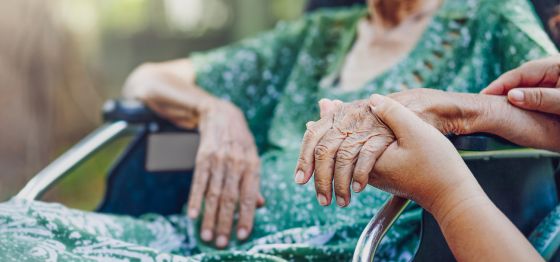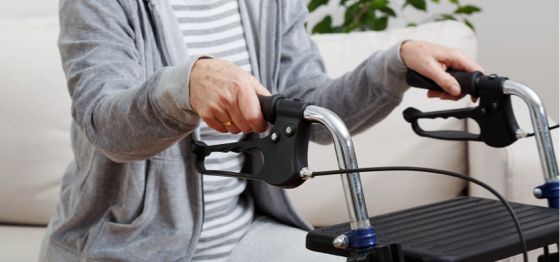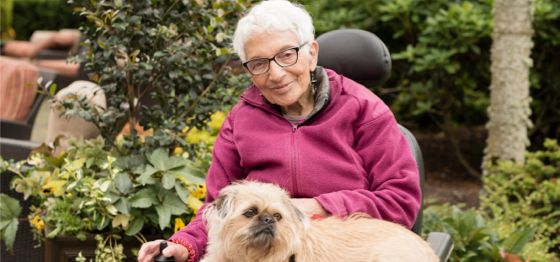Among senior care recipients, nearly 9 out of 10 live in their own homes, in someone else’s home or in their caregiver’s home. While some of those homes are well suited for providing care for the elderly, many require updates or modifications.1
Family caregivers are the safety net for in-home elderly care
Family caregiving plays a major role in America’s long-term care system. It may be a privilege and a rewarding opportunity, but it may also be a tough job, especially when caregivers must also be constantly dedicated to providing a safe, healthy environment within the home. Making a few simple modifications around the house may go a long way toward helping them look after their senior loved ones in a secure, effective way.
Home modifications to care for the elderly
The goal of any caregiver is to help a loved one be as independent as possible at home, for as long as possible. While that caregiver may not be able to afford building an addition or completely revamping the house, there are easier, more affordable ways to make the house safe and navigable for the elderly. A good place to start is to consider the 7 principles of Universal Design,2 which is the concept that buildings, products and technologies should be usable by the broadest range of people, regardless of their individual levels of ability or mobility, age, gender or physical stature.
Most homes are built for the needs and preferences of their owners, which may make them unsuitable for some seniors. In most cases, universal design may be applied to a new or existing home to create a safe, comfortable environment that promotes independence and allows the senior to age in place.
Universal design features for the home environment include stepless entryways, wider doorways, lever-style handles on doors and faucets, multi-level or height-adjustable counters, grab bars in bathrooms, easy-access drawers, cabinets, and storage areas and ample lighting.3 These design elements improve ease of use, comfort, accessibility and independence for the elderly while also helping to prevent falls, injuries and accidents. Here’s a closer look:4
- No-step entry
This eases entrance to the home for those who use wheelchairs and walkers or who are simply unsteady on their feet. This feature also makes it easier to carry medical equipment, groceries and other items inside. If a no-step entry isn’t possible, consider a full or threshold ramp, or a lift.
- Bathroom grab bars and a raised toilet seat
Falls are a serious concern among the elderly,5 so making slippery or unsteady bathroom surfaces safe and accessible is a top priority. In the shower, a suitable chair is also very helpful. A curbless shower—with no divider between the bathroom and shower floor—may reduce the chances of tripping and falling.
- Wide doorways and halls
Widening of doorways and halls may involve expensive remodeling, but even if new construction isn’t possible, installing offset door hinges can allow just enough extra room in a doorway for a walker or wheelchair to get through.
- Reachable outlets, controls, knobs and switches
Light switches, thermostats, faucets, cabinet pulls, and doorknobs can all be lowered, and electrical outlets raised. These modifications allow seniors to reach them more easily from a sitting or standing position.
- Easy-to-use handles and doorknobs
According to the Centers for Disease Control and Prevention, nearly 50% of people aged 65 and older report having arthritis.6 Lever handles, rather than turn-to-open doorknobs, make things easier for elderly, arthritic hands.
- Increased lighting
Dim areas may cause falls. That’s why it’s important to equip the senior’s living space with bright, clear lights and accessible options for turning them on and off.
Technology to support in-home senior care
According to AARP, more than 70% of family caregivers say they are interested in technology to support their role—but less than 10% actually use it.7 Taking time to understand, and then employ, today’s technology may make the caregiver’s life much easier, and the care provided to a loved one may be much more effective.
- Medical alert systems come in a wide variety of options, including GPS tracking and automatic fall detection.
- Monitors, alerts and alarms include motion sensors, video and audio monitors, floor mat and bed pad alarms, stove burner alerts and smart medication dispensers.
- Health tracking tools monitor blood pressure, blood sugar, weight and other health indicators, while some can even send reports to the senior’s doctor.
- Apps may aid caregiver communication, create medication lists, set up transportation, find additional help and much more.
- Video chat and smart speakers help fight isolation, making it easier for the senior receiving care in the home to visit with friends and family.
Resources to pay for home care for seniors
Seniors without long-term care insurance often start out relying on an unpaid family caregiver, but eventually many need to turn to paid help, and that can become expensive.8 According to a recent insurance company survey on the cost of long-term care, the national average bill for a home health aide is $4,576 a month.9
- Paying out of pocket
For the most part, seniors who have home care are private pay.10 Seniors may cobble together a care budget from multiple sources, including:
- Annuities or investments and savings
- Life insurance policies via cash value or an accelerated death benefit
- Borrowing, e.g., a home equity loan or reverse mortgage
- Government help
Those who don’t have insurance coverage for long-term care and can’t afford to pay out of existing financial resources may look to government assistance to help pay for in-home care. Medicare, Medicaid and the Veterans Administration may be worthwhile avenues to explore.
For older adults and their loved ones, options are available to support home care for seniors.
Go365 by Humana® makes wellness fun and easy. We help Humana Medicare members with Go365® on their plan reach health goals, as well as take care of their physical and emotional health—allowing members to thrive at any age.
Humana Medicare members with Go365 on their plan can enroll in Go365 at
Go365 is a well-being and rewards program for many Humana Medicare Advantage members. Rewards have no cash value and can only be redeemed in the Go365 Mall. Rewards must be earned and redeemed within the same plan year. Any rewards not redeemed by December 31st will be forfeited.
If you need to enroll in Medicare Advantage or change your plan outside of the usual Medicare Annual Election Period, a Special Election Period (SEP) could be the answer. For information on eligibility, visit Humana’s
To learn more about Humana Medicare Advantage, call to speak with a licensed Humana sales agent at 1-844-321-5843 (TTY:711), Monday – Friday, 8 a.m. – 8 p.m. local time or visit
Sources:
1Amy Goyer, “Resources, Gadgets and Tools to Care for an Older Adult at Home,” AARP, last accessed February 10, 2023,
2“Universal Design: What Is It?,” U.S. General Services Administration (GSA), last accessed February 13, 2023,
3Goyer, “Resources, Gadgets and Tools to Care for an Older Adult at Home.”
4Goyer, “Resources, Gadgets and Tools to Care for an Older Adult at Home.”
5“Facts About Falls,” Centers for Disease Control and Prevention, last accessed February 10, 2023,
6“Arthritis Related Statistics,” Centers for Disease Control and Prevention, last accessed February 10, 2023,
7Amy Goyer, “6 Tips for Choosing Family Caregiving Technology,” AARP, last accessed February 10, 2023,
8Marcia Mercer, “Can You Afford a Home-Care Worker?,” AARP, last accessed February 10, 2023,
9Mercer, “Can You Afford a Home-Care Worker?”
10Mercer, “Can You Afford a Home-Care Worker?”
11Mercer, “Can You Afford a Home-Care Worker?”
This information is provided for educational purposes only. It is not to be used for medical advice, diagnosis or treatment. Consult your healthcare provider if you have questions or concerns.
Go365 is not an insurance product and is not available with all Humana health plans. This is a general description of services which are subject to change. Product features may vary by client. Please refer to Customer Support for more information.
Humana is a Medicare Advantage HMO, PPO and PFFS organization with a Medicare contract. Humana is also a Coordinated Care plan with a Medicare contract and a contract with the state Medicaid program. Enrollment in any Humana plan depends on contract renewal.






